Menu
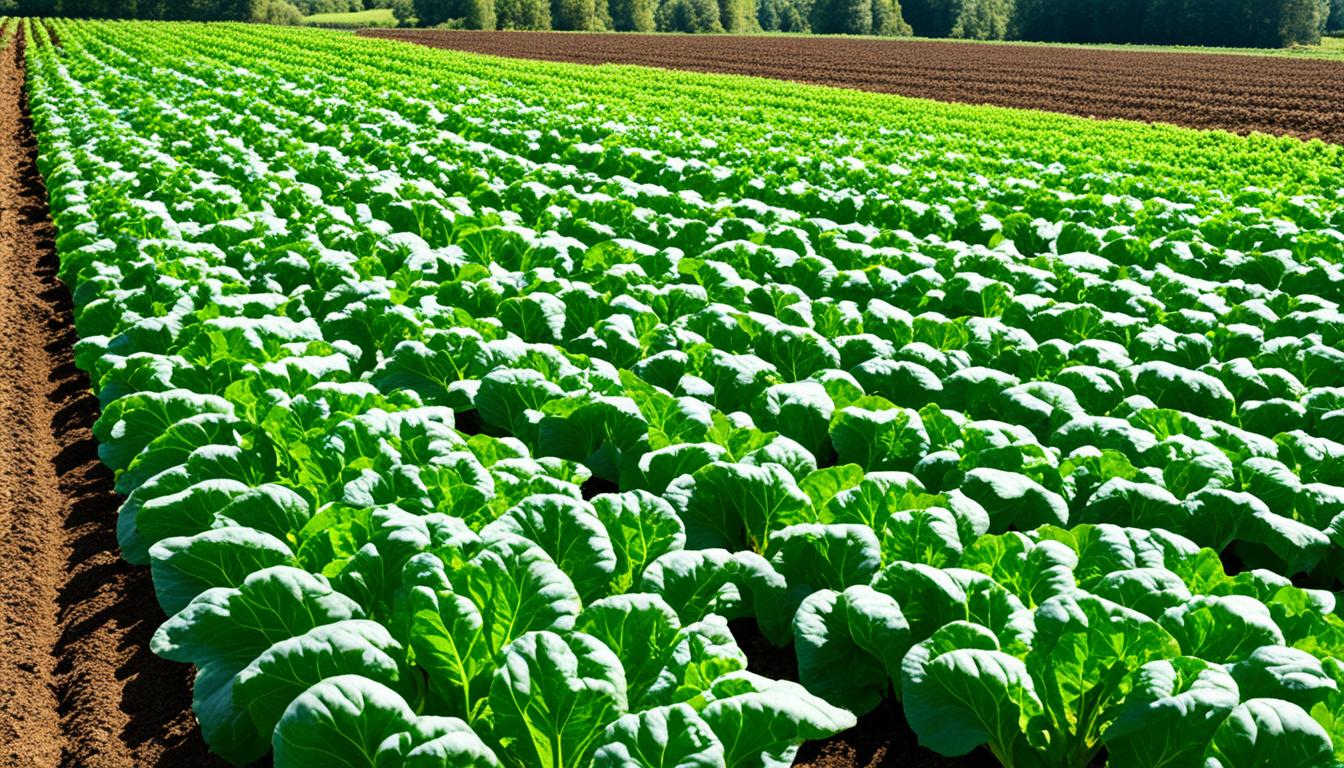
“The soil is the great connector of lives, the source and destination of all.” – Wendell Berry
In our push for sustainable farming, we focus on taking care of the soil. Good soil management helps the Earth and our farms. It’s vital for climate-smart and regenerative farming. The key is to use less tillage, handle pests and nutrients cleverly, and plant cover crops.
Our crop yield’s quality and amount depend on our soil’s health. By caring for the soil, we avoid losing nutrients and organic matter. This helps our farms produce more. When our soil is full of good things and well-structured, we don’t need as many outside products. This is good for the land, the food, and the people in the community.
Farmers can make a big positive impact by using sustainable methods. This way, the soil stays healthy, and so does the land and the economy. It’s a win for everyone for the long term.
Sustainable soil management is about keeping soil healthy and productive. This helps in conserving the soil, making it more fertile, and farming in a way that lasts. These practices lead to more food without harming the earth.
Sustainable soil management means farming in smart ways. This protects and improves the soil while using nature wisely. It helps grow safe, good crops and makes farmers more able to handle changes. Good soil helps the planet and lets farmers grow more food.
To manage soil well, we have to follow key principles. These include keeping the soil from washing away, making farms more productive, and saving water and other natural gifts.
| Soil Component | Volume Percentage |
|---|---|
| Minerals | 45% |
| Water | 25% |
| Air | 25% |
| Organic Matter | 2%-5% |
It’s important to know what your soil is made of. Clay-rich soils are great for farming and use less fertiliser. But sandy soils need more work and care. Knowing this helps farmers grow more food in better ways.
Minimising tillage is key to keeping soil healthy. Farming methods, used for a long time in areas like western Asia, Europe, and northern Africa, have changed. They moved from focusing on a fine seedbed to dealing with soil damage. It’s vital to know how tillage affects land and look at other ways, like conservation tillage and no-tillage, for a healthy soil.
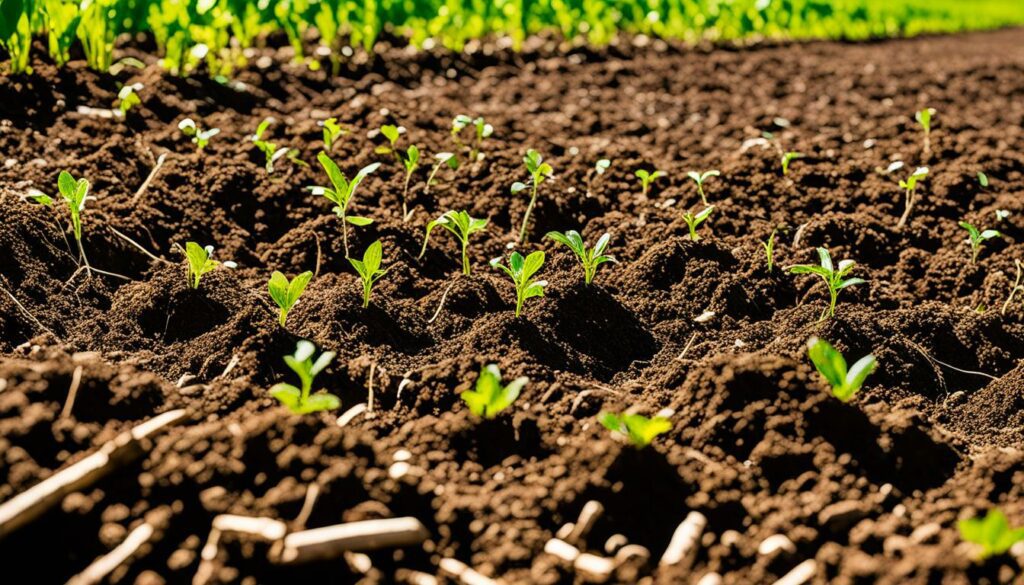
Using tillage can really disrupt where soil organisms live. This leads to problems like soil getting too compact, washing away, and losing nutrients. Even though tools like the moldboard plough made tilling easier, they also hurt the soil in the long run. This can make it tough for water and roots to move through the soil. It affects how well crops grow. We use these systems a lot in farming with machines. But we need to think about how it affects the soil.
We’re using new ways instead of traditional tilling. These include conservation tillage and no-tillage. They keep the soil’s mix and life healthy, while also making sure the land grows crops well. Using certain herbicides and tools for softening compact soil, and growing cover crops, lessen how much we need to till. Now, we have new planting machines and use natural ways to boost the soil and grow more plants, with less impact.
Also, methods like strip-till and vertical tillage, along with no-tillage, keep the soil richer and buzzing with life. Studies have found that tilling less can help crops grow more, with corn up by 3.3% and soybeans by 0.74% in the U.S. These ways are cheaper too, cutting down on hard work, fuel, and machine use. They are good choices for farming today.
Using cover crops is key for managing soil in a sustainable way. They protect the soil and add nutrients, which is good for keeping the soil healthy over time. Since 2017, the amount of land with cover crops has jumped to 15.4 million acres, a 50% rise over five years. This shows farmers understand that cover crops are important.
From 2012 to 2017, cover crop fields in eight states grew more than double in size. Plus, 15.2% more farms were using cover crops. This proves cover crops are crucial in today’s farming.
Farmers across the country are singing the praises of cover crops. In a big survey, it was found that after five years of using them, corn and soybean yields went up. Even in the tough drought of 2012, yields jumped up by over 9%, which shows how good cover crops are, even when things are hard.
Cover crops do a great job at helping the soil. They can fix nitrogen and help hold onto nutrients that are good for plants. This means farmers might not need as much artificial nitrogen, which is great for the environment.
What’s more, cover crops keep the soil in place and stop it from being washed away in heavy rain. This is super important in parts of the US that see a lot of wet weather. By stopping soil and nutrients from running off, they also help keep the soil healthy and make for better all-around farming.
One cool idea is mixing different cover crops together. This can be a bit tricky to pull off, but it offers lots of benefits. For example, it can lead to more plant material, help make more nitrogen, and keep weeds at bay. It also invites all kinds of plant and bug life, which is good for the overall balance of the farm.
For organic farms especially, cover crops are like gold. They’re key in keeping the soil rich and fighting off weeds. A method called green manure can even make the soil healthier by adding nutrients. When no-till farming is used with cover crops, it also makes water soak in better, keeps moisture in, and helps fight weeds.
Cover crops do a lot of good, as shown in the table below. Despite some costs at the start, their benefits in better yields, saving money on machines, and healthier soil make them very worthwhile. Knowing how to match the right cover crop to what your soil needs is important for getting the most out of them.
| Benefit | Impact |
|---|---|
| Increase in corn yield | 3% (normal years), 9.6% (drought year) |
| Increase in soybean yield | 4.9% (normal years), 11.6% (drought year) |
| Reduction in nitrogen input | 50-150 lbs/acre (legumes) |
| Nutrient scavenging | 30-50 lbs/acre (non-legumes); up to 150 lbs under specific conditions |
| Soil erosion prevention | Enhanced soil coverage, reduced runoff |
Getting cover crops going early and picking them right can really make a difference in your farming. It sets the stage for a way of farming that’s good for the earth and keeps producing well. There’s plenty of help and advice out there, from universities, the USDA, and farming experts. This means farmers can get the support they need to do well with cover crops.
Crop rotation is a traditional farming method that helps keep soils healthy. Farmers change crops regularly over three to ten years. This brings many benefits that support farming. We will explore these advantages and ways to rotate crops effectively.
Crop rotation helps the soil by nutrient cycling. It brings back nutrients like potassium, making the soil richer. This allows different plants to do well in the same space. For example, using a two-year rotation can boost corn yield by 29%. A four-year plan, including a legume cover crop, can up the yield by 48%.
It’s also great for dealing with pests. Changing crops disrupts pests and diseases, lowering their impact. This means farmers can use fewer chemicals. Studies show that farms with diverse crops over ten years saw more profit and better yields.
A good rotation over four years might include legumes, then root veg, followed by fruits and leafy greens. This setup makes the soil better for plants, holding more water. Grazing animals also help, adding organic material and improving soil structure.
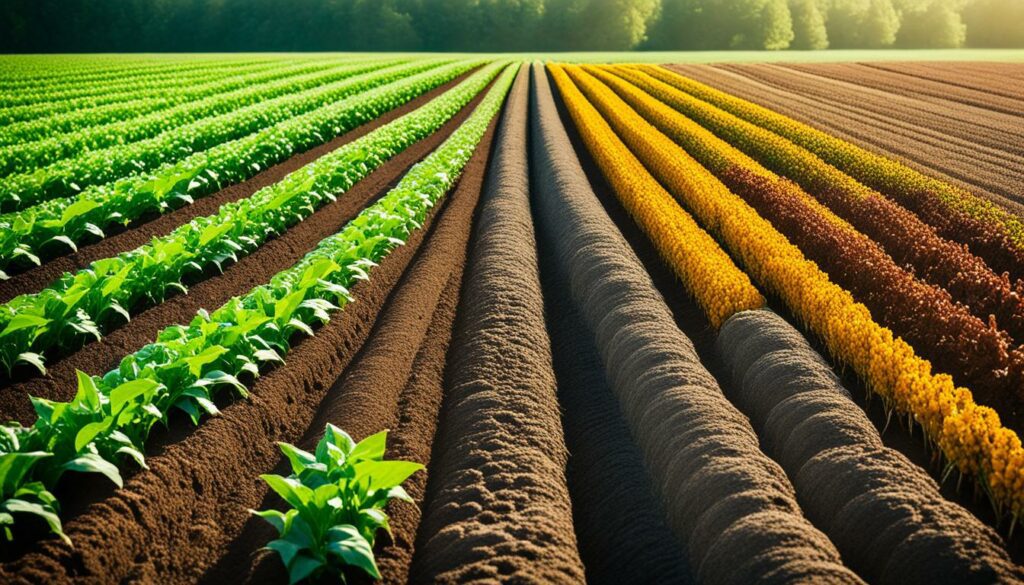
| Year | Crop Type | Benefits |
|---|---|---|
| Year 1 | Legumes (e.g., peas, beans) | Nitrogen fixation, improves soil fertility |
| Year 2 | Root Vegetables (e.g., carrots, radishes) | Reduces soil compaction, enhances soil aeration |
| Year 3 | Fruits (e.g., tomatoes, cucumbers) | Diversifies crops, interrupts pest cycles |
| Year 4 | Leafy Greens (e.g., lettuce, spinach) | Improves microbe levels, enhances soil structure |
Using good crop rotation like this helps farmers be more eco-friendly. These methods help with many farming challenges. They keep the soil healthy for the long term and improve how much food farms can grow.
Keeping the soil fertile is key for plants to get the right nutrients and grow well without hurting the environment. About 30% of the earth’s soil isn’t as healthy as it should be. So, farmers need to carefully choose when and how to use fertilisers. They follow the USDA’s “Four Rs” to do this. It’s all about using the correct amount, type, where to put it, and timing. This makes the soil’s nutrients work better and stops harm to nature.
Testing the soil is vital. It shows what nutrients the soil already has and what it needs. This way, farmers can use fertilisers that won’t wash into rivers or lakes. Using the latest tests helps them make changes to keep the soil rich and productive. This is good for crops and for the planet.
Nutrients like nitrogen and potassium are important for plants, but too much can be bad. It can cause problems like eutrophication, harming water life. So, farmers aim to use fertilisers carefully. Using things like cover crops and compost can also make the soil healthier. This not only feeds the plants better but also helps the soil hold water and grow stronger crops.
In China, many soils have too many harmful elements, showing the need for careful soil care. As our atmosphere gets more CO2 and other gases, protecting the soil is crucial for our planet’s health. It’s vital for goals like no hunger and clean water, set by the United Nations. This underlines the importance of looking after the soil.
But, funds for farming are getting smaller, making it tough for farmers to use good soil practices. Thankfully, there are places like the UC Sustainable Agriculture Research and Education Program to help. They give advice based on the latest science. The UC Davis California Soil Resource Lab also offers key learnings on caring for the soil.
Adding organic matter to soil is key for healthy soil and sustainable farming. It comes from many sources and boosts the soil in many ways. It helps the soil’s structure, makes nutrients available, and increases overall soil productivity.
Organic matter comes from composting, crop leftovers, and cover crops. These sources are vital for managing soil health. Composting turns waste into humus, adding nutrients to the soil. Crop leftovers differ by crop but can greatly improve soil fertility. Cover crops, known as green manures, are grown to add nutrients and increase soil matter.
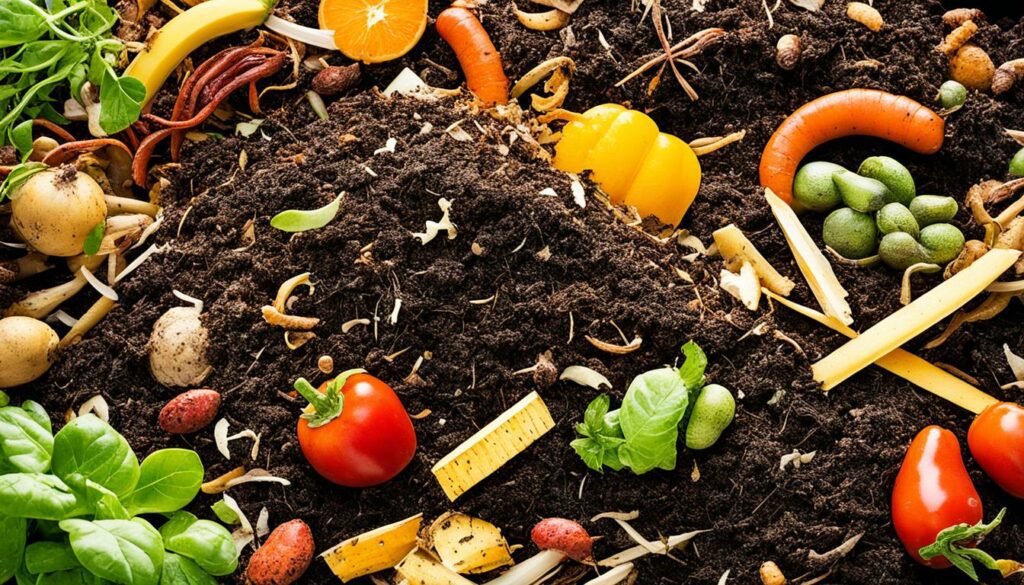
There are many benefits to adding organic matter to soil. It makes the soil hold water better and improves its structure. This helps roots grow well and take in nutrients. More organic matter means more microbes, which break down materials into nutrients. It also makes the soil more stable and less prone to erosion.
To manage soil organic matter well, we should disturb the soil less and use cover crops. These steps help keep organic matter in the soil. They also boost soil life, conserve water, and keep the soil’s pH at the right level.
Chapter 9 in “Building Soils for Better Crops” explains how soil organic matter changes over time. To keep and increase organic matter, some steps are key. Growing crops that leave more residue and tilling less are important strategies.
Efficient water management is key for keeping our soil healthy. We need to give crops just enough water. This helps save water and makes our plants stronger against droughts.
Water balance in farming is crucial. Too much water can wash away important nutrients. Too little can hurt the harvest. It’s important for keeping our water clean and our food healthy.
There are many ways to make watering plants better. Drip systems water the roots directly. This stops water from being wasted by evaporation and running off. Watering plants at the right times also saves water. Plus, new technology helps us be ready for droughts.
| Water Management Objectives | Practices |
|---|---|
| Control water flow in fields | Drain excess water, form buffer areas, store water for irrigation |
| Environmental Impact Reduction | Cooperation among authorities, researchers, and farmers |
| Combat Eutrophication | Constructed wetlands with nutrient retention capacity |
| Enhance Biodiversity | Natural stream beds, controlled subsurface drainage |
Using water wisely is not just good for farms, it’s good for the planet. These methods help farms stay productive for a long time. They also protect the environment.
Soil erosion is a big problem for farming and the environment. It happens because of water and wind, and bad farming. It’s important to know these reasons to stop erosion.
Soil can be lost by water in rains and wrong irrigation. Wind can carry soil away in dry areas without much plants. Bad farming like ploughing too much harms soil, making it easy to wash or blow away.
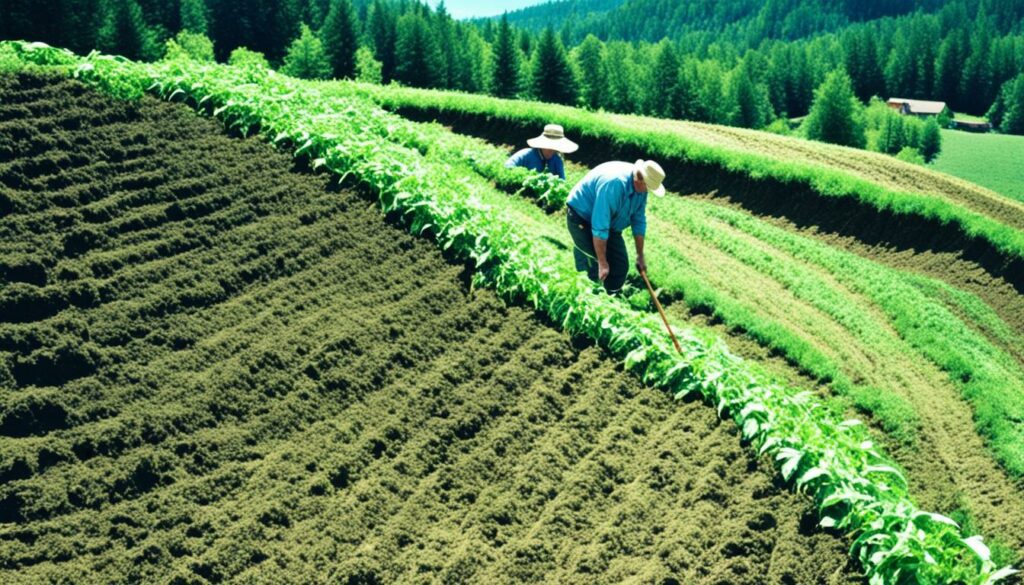
To stop soil from eroding, we should protect and care for the land. Methods like contour ploughing and having plants all year help a lot. Cover crops, like legumes, make soil stronger and keep it from eroding.
Crop rotation helps soil stay healthy and not wash or blow away. By planting different crops each year, the ground stays firm and strong against erosion.
| Practice | Benefits |
|---|---|
| Contour Ploughing | Reduces water runoff, captures soil, slows down erosion |
| Terracing | Improves water absorption, reduces soil loss on slopes |
| Vegetation Cover | Protects soil surface, roots bind soil, reduces raindrop impact |
| Buffer Strips | Traps sediments, reduces soil carried away by runoff |
By using land well, keeping it covered, and managing rain, erosion can be stopped. Efforts dating back to the 1950s in Queensland show that caring for the land really works. With tests and close checks, we can keep the soil healthy for growing food, protecting it for the future.
Enhancing soil life means creating grounds where many organisms thrive. These little beings, like earthworms, help with nutrient recycling, lower disease risks, and shape soil. According to the FAO, the value of soil life is over US$1542 billion. We can improve it by using less chemicals and planting more types of plants. This approach helps farming become both stronger and more productive.
Natural soils outside farms have the most soil life. On farms, there’s less of it, unless we add more carbon and nitrogen. This shows we need to manage the land as a whole. Places where animals graze and there’s lots of different plants have a lot of soil life. This happens because different plants mean more food for various soil creatures.
Good land management includes careful livestock grazing and avoiding ploughing too much. Keeping some plants all year helps, as does using fertiliser in the right ways. These steps keep our land healthy and working well. Managing grazing and using the land smartly are crucial for our environment’s future.
Adding things like plant leftovers to the soil makes the earthworms happy. This shows that organic matter is essential for soil life. Growing plants that naturally fit the soil also makes a big difference. It boosts health and makes the land more able to cope with changes.
In Europe, the SOILGUARD project aims to make a global guide for soil life. They’re creating a tool, SOILGUARDIANS, to make soil care sustainable. Many big groups, like the FAO, support this work. They believe it’s crucial for both food and nature.
| Practice | Impact on Soil Biodiversity |
|---|---|
| Minimum/No-Till Practices | Reduces soil disruption, promoting organism diversity. |
| Perennial Plants | Provides consistent habitats for soil organisms. |
| Managing Grazing Pressure | Increases plant diversity, supporting varied soil life. |
| Application of Organic Matter | Boosts populations of beneficial soil creatures. |
| Promoting Varied Plant Species | Enhances food resources, supporting a diverse ecosystem. |
Carbon sequestration in soil is key in fighting climate change. It captures CO2 from the air, which cuts down its levels in the atmosphere. This helps reduce the effect of human CO2 emissions on climate change. Plus, it boosts soil health and productivity.
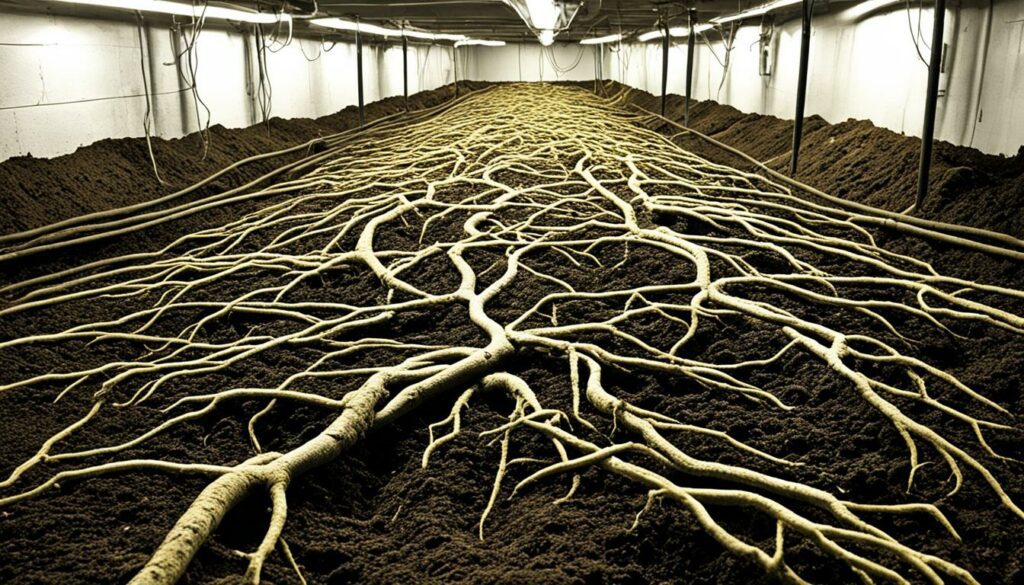
Soil’s role in storing carbon is crucial. About a third of the world’s soils are unhealthy, losing their carbon. If we build up this carbon, we can grow more food and use less fertiliser. This saves between 0.79 and 1.54 Gt of carbon yearly, a big help in fighting climate change.
To store more carbon in soil, we can use different methods. Conservation tillage keeps soil healthy and SOC high. Cover crops keep bare soil covered, adding to its quality. Agroforestry, which mixes trees with crops, boosts carbon storage by adding organic matter to the soil.
Countries with low crop yields should focus on these soil-strengthening methods. Also, 28 nations have pledged to increase their soil carbon as a climate action. As global warming speeds up, we must fast-track these natural solutions.
In organic farming, taking care of the soil is crucial. It uses no chemicals but natural ways to keep the soil healthy. This helps plants grow better and protects the earth’s natural balance.
This method fits well with sustainable farming. It focuses on creating a rich, living soil that benefits everyone.
Organic farming is based on certain key ideas. It avoids using artificial chemicals to grow crops. Instead, it relies on natural methods to keep the soil in good condition.
This means no synthetic fertilisers or pesticides. Organic farmers use things like compost and natural cover crops. This helps the soil stay fertile and full of life.
There are important steps to manage soil sustainably in organic fields. First, farming methods should not disturb the soil too much. This helps keep it in good shape for plants to grow well.
Farmers need to know what’s in their soil and how healthy it is. Soil contains minerals, water, air, and organic matter. All are vital for plants.
Did you know, on just an acre of land, there are about 900 pounds of earthworms? There are also 2,400 pounds of fungi and 1,500 pounds of bacteria. These tiny creatures do big work in the soil, helping plants get what they need. They make the soil rich and full of nutrients.
| Organism | Weight (pounds per acre) | Function |
|---|---|---|
| Earthworms | 900 | Enhancing water infiltration and nutrient recycling |
| Fungi | 2,400 | Decomposition and disease resistance |
| Bacteria | 1,500 | Nutrient recycling and soil aggregation |
| Protozoa | 133 | Regulating bacterial populations |
| Arthropods and Algae | 890 | Soil structure stability and nutrient cycling |
It’s also important to put organic matter back into the soil. And to change which crops are grown on the land. This keeps the soil healthy and lets organic farms grow food well, without hurting the environment.
Soil testing helps manage soil in a sustainable way. It shows us the nutrient levels and pH of the dirt. This makes soil analysis easier and helps us know how much and what kind of fertilisers to use. This way, we keep our use of nutrients smart and good for the Earth.
Fields growing corn and soybeans can lose some key nutrients each year. For example, they can lose 5 to 6 pounds of P1-phosphorus and 10 to 15 pounds of potassium (K) per acre. This loss is why testing soil often is crucial for keeping crops healthy. Farms might not be producing as much as they could because they’re not managing their soil’s nutrients well.
Using a good soil testing programme can help farmers grow more crops and earn more. It means farmers know exactly what nutrients their crops need. This stops nutrients from washing away, protects the environment, and saves money on unnecessary fertilisers. Testing soil regularly and putting the right amount of fertilisers can keep the soil and crops healthy.
Studies tell us that the best way to use nutrients is to balance N, P, and K based on the soil’s needs. With soil tests and local advice, farmers can figure out the best nutrient plan. This approach is not only good for growing crops. It’s also essential for farming that thinks about the future and the environment.
Sustainable soil management keeps soil healthy in a smart way. This lets us grow crops well while taking care of the earth. It’s important for good food, happy farmers, and dealing with the environment’s changes.
The principles focus on more crops and jobs, safer nature, and better economy. They also help soil and farmers stay strong against new challenges.
Tillage can harm soil bugs’ homes, making soil packed, eroded, and less fertile. It also stops the soil from forming good structures and having enough tiny spaces.
Instead of tilling, farmers can use methods like conservation tillage or no-tillage. These keep the soil’s natural setup and its life, making it a good place for plants and bugs.
Cover crops are not for eating; they cover the soil. They stop soil from washing away, add nutrients, and make the soil better for growing food.
Crop rotation helps the soil use nutrients better and support more life. By switching what’s planted, it also confuses bugs and helps control plant diseases.
We should test the soil to know what nutrients it needs. Then we add the right amount of fertiliser. This stops us from using too much or too little, keeping the soil right for crops.
Good stuff for the soil that comes from plants, like compost, left-over plants, and plants grown to be ploughed under. These make the soil better for plants by improving its structure, nutrients, and water-holding capability.
Looking after water well means plants get enough without wasting it. This saves water and helps farms survive dry times. Ways to do this are using drip irrigation and not letting water run off fields.
Soil erosion happens when water or wind carries soil away, or farming methods wear it down. This makes the land less productive for growing food.
To stop soil from washing away, farmers can plant crops in lines along slopes, build steps with soil holding walls, keep the ground covered with plants or special strips, and use trees. These ways slow down water movement and keep the soil where it is.
We can make soil a better home for many kinds of life by using fewer chemicals and growing different plants. This promotes healthy soil, fights diseases, and keeps nutrients moving around better.
Carbon sequestration keeps carbon from the air in the soil, helping fight climate change. Ways to do this are by planting in a more natural way, using cover crops, and planting trees with crops.
Organic farming is about caring for the soil naturally, without artificial chemicals. This way of farming helps nature keep a good balance and makes sure resources are used well.
Testing the soil tells farmers what the plants need to grow well. This helps them add just the right amount of nutrients, keeping the soil healthy without waste or harm to the environment.